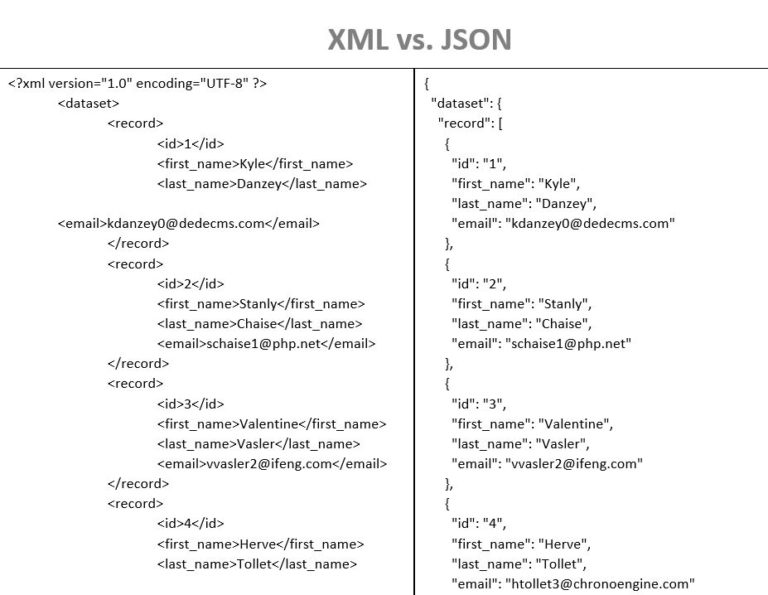
If you are transferring XML data from point to point and it fails, it’s nice to be able to read the XML and figure out what went wrong. If the XML is compressed and the transfer fails, it’s sometimes not possible to decompress it and examine the contents. In other words compressing XML cancels out the human-readability advantage it has. The conversion process itself doesn’t alter the data but transforms its format. However, improper handling might lead to data loss or inaccuracies. Ensuring meticulous parsing of XML tags and correctly mapping them to CSV columns safeguards data fidelity, maintaining the original information structure and content.
What is an XML File
JSON has rapidly gained popularity, now the dominant choice for modern web development, (I assume because of the proliferation of web applications that affect our daily lives). The XML here represents the election results by hierarchically organizing the information. The first file includes the XML declaration, (at the top), that provides optional information.
Option 2: No-Code XML Conversion Solutions
You can refer to our guide XML conversion in Python where we compare the various options and libraries such as Element Tree and lxml of converting XML to CSV. In this step you need to pick the conversion method that best fits your scenario as outlined previously. You can either flatten each branch of your XML to a single CSV or use a normalised approach for complex and nested XML. Decide which elements or attributes in the XML you want to include in the CSV. Typically, each row in the CSV will represent a record, and each column will represent an attribute or a specific element. In this section we cover the XML to CSV conversion process one step at a time.
- This XML snippet represents information about a book and its attributes, enclosed within custom tags, showcasing how XML effectively structures data for exchange between systems.
- These systems will still need to communicate efficiently with each other, requiring you to convert data from one file format to another.
- A CSV file (Comma-Separated Values) is used primarily for tabular data.
- Converting CSV files to XML format using Python involves using a library to read CSV files and generate XML output.
Common JSON uses:
XML is rich, extensible, and easy to validate and transform by machines. It is widely used by document formats and standards, such as HTML, RSS, and SOAP, as it can handle metadata, schemas, and namespaces. As I’ve said, CSV is a text file with a straightforward tabular structure.
Reading CSV Files into Python using Pandas
Programmatically a system can read all lines from a CSV and for each line split values between commas characters. XML (Extensible Markup Language) is a markup language that defines a set of rules for encoding hierarchically organized documents. The XML language is classified as extensible because it allows defining csv vs xml the markup elements. In this article I will introduce you to XML vs CSV vs JSON data formats and show you, simply, how they are in practice. Clearly XML initially led as the preferred data format, alas, no more. It’s relegated to more niche or legacy applications and now trails behind both CSV and JSON.
Through JSON, users can directly submit their data, which is then transmitted to the server for processing. The server sends a response back to the user, all without any redirection. This streamlined process significantly saves time and reduces bandwidth consumption compared to the conventional approach of redirecting to and from server pages. The most prevalent file formats used by developers are CSV and XML. So, in this article, we will compare the two formats and see which one is better.

You have to understand the XML file’s structure before converting. The structure of XML data is hierarchical, with branches and nested elements. As we have mentioned above, a CSV file uses commas to separate data values.
In this article, we will compare XML files and CSV files to help you make an informed decision. Developers can use XML and CSV to store the information on the disc, in a database, or as a computer-readable interchange format. It’s simpler to stream than XML, for example, as a “streaming” format for massive datasets. I don’t have enough reputation to comment on the relevant answer, but someone suggested compressing the XML as a way to gain size parity with csv formats. While this is true, XML compression can somtimes come back to bite you.
I’ve also found that some cvs generators/parsers have a lot of difficulty with general text data. Long text strings with a lot of carriage returns and commas and quotations, etc etc, just make life really difficult when it comes to manipulating a cvs. I have found of the greatest advantages of XML to be the parsing functionality and the strict validation that comes out-of-the-box with most XML libraries. To be clear, XML is probably the incorrect choice for 90% of the data interchange it is currently being used for, since those uses break some or all of the above assumptions. XML has the benefit of having self-describing data (tags) and having hierarchy – which gives you a lot more flexibility in the way that you store the data. CSV is useful when you just have a series of a values that relate to some piece of information and you know you will always store values for each field.
Because of this, knowing how to convert between these formats can be important for maintaining efficient data integration. You can convert CSV files into other file formats like .xlsx with utilities like CloudConvert, or just by opening the file in Excel and saving with a different file extension. There are also a large number of libraries for converting spreadsheet files into formats like JSON or XML, like csvtojson.

Leave a Reply